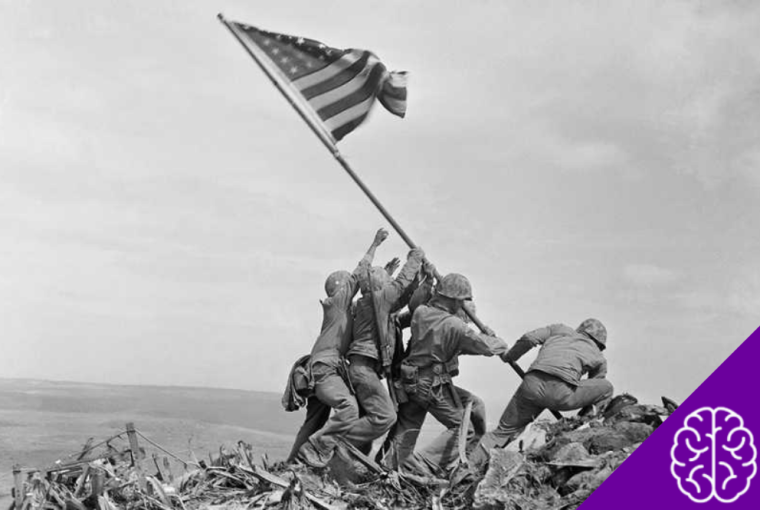World War II remains one of the most studied events in global history. Its magnitude, far-reaching consequences, and complex geopolitical dynamics continue to captivate historians and the general public alike. But beyond the well-known battles and political alliances, there are countless fascinating details about the war that many people aren’t aware of.
Here, we’ve rounded up five compelling facts about World War II that will deepen your understanding of this monumental historical period.
1. The “Phoney War” – When Europe Went Quiet
When you think of World War II, images of intense battles and unrelenting bombings likely come to mind. However, for the first eight months after Britain and France declared war on Germany in September 1939, relatively little fighting took place on the Western Front.
This lull was known as the “Phoney War” or “Sitzkrieg” (sitting war). Despite the declaration of war, both sides hesitated to launch full-scale attacks. British and French forces fortified their defenses, particularly along the Maginot Line, while Germany focused on its invasion of Poland and preparation for future offensives.
The “Phoney War” ended abruptly in May 1940, when Germany invaded France and the Low Countries with a devastating and highly mobile Blitzkrieg strategy that reshaped the trajectory of the war.
Why It’s Important
This period reveals how strategic calculations—whether based on overconfidence, indecision, or fear of escalation—can shape the course of global conflicts. It also underlines the unpredictability of war, where moments of eerie calm are quickly overtaken by chaos.
2. The Secret Role of Codebreakers at Bletchley Park
During World War II, the Allied victory owed a tremendous debt to an unassuming estate in England called Bletchley Park. This was the home of a top-secret team of codebreakers, including the famed mathematician and computer pioneer Alan Turing.
The team’s primary focus was breaking Enigma, the encryption machine used by the Germans to secure military communications. By cracking Enigma, the Allies were able to intercept German operations, from troop movements to submarine attacks, with astonishing precision.
According to historians, this intelligence—codenamed Ultra—shortened the war by approximately two years and saved countless lives.
Fun Fact
Bletchley’s work laid the foundation for modern computing and cryptography. Years later, Alan Turing’s contributions would be recognized, though initially, much of his work remained shrouded in secrecy for decades.
3. World War II Fueled Unprecedented Scientific Advancements
While war is a tragic event, it’s also a crucible for invention. World War II drove an explosion in technological and scientific innovations, many of which still influence our world today.
Key Innovations of WWII:
- Radar: Crucial in detecting enemy aircraft and ships, radar was refined during the war and later applied to weather forecasting, aviation, and telecommunications.
- Penicillin: Though discovered earlier, the large-scale production of penicillin during World War II saved thousands of soldiers’ lives and marked the beginning of the antibiotic revolution.
- The Jet Engine: Fast and powerful jet-powered aircraft emerged during the war, paving the way for modern aviation.
- The Manhattan Project: The race to develop nuclear weapons led to massive investments in atomic research, which would later influence energy production.
While these innovations were born from necessity, their long-term impacts extended far beyond the battlefield.
4. The Unconventional Weapons of War
World War II wasn’t just fought with soldiers, tanks, and planes. Both the Allies and Axis powers invested in creating unconventional weapons, some of which bordered on the absurd.
Strange Wartime Projects:
- The Bat Bomb: The U.S. experimented with bombs filled with bats carrying incendiary devices. The idea was for the bats to roost in buildings, spreading fires in enemy territories. The plan, however, never came to fruition due to practical challenges.
- Ice Aircraft Carriers: The British seriously explored creating aircraft carriers out of reinforced ice (a mix of ice and wood pulp called Pykrete). The concept was abandoned due to resource constraints and technical difficulties.
- Germany’s Wonder Weapons: Hitler’s regime focused on “Wunderwaffe,” or “wonder weapons,” such as the V-2 rocket, the world’s first long-range guided ballistic missile.
While these projects didn’t change the course of the war directly, they highlight the lengths to which nations went in their pursuit of tactical advantages.
5. World War II’s Staggering Human Cost
One of the most sobering aspects of World War II is its unparalleled human toll. Over 70 million people are estimated to have perished during the conflict, making it the deadliest war in human history.
What’s even more staggering is the civilian toll. Unlike previous wars, World War II did not confine its destruction to soldiers on the battlefield. Modern warfare, economic blockades, and industrial-scale genocide, including the Holocaust, targeted civilian populations directly. Cities like Hiroshima, Nagasaki, and Dresden became devastating reminders of war’s brutal reach.
Reflecting on the Numbers
- Approximately 3% of the global population in 1940 died due to the war.
- The Soviet Union suffered the largest loss, with around 27 million fatalities (both civilian and military).
These statistics are not merely numbers—they represent lives lost, families broken, and generations affected. They serve as an enduring reminder of the devastating consequences of war.
Lessons from History
World War II remains a stark reminder of humanity’s capacity for both innovation and destruction. The conflict resulted in advancements that reshaped technology and medicine for the better, but it also revealed the horrifying depths of human suffering.
Understanding these lesser-known aspects of the war deepens our appreciation for the complexity of global conflicts and the resilience required to overcome them. Learning about history is more than an academic exercise—it’s a way to honor those who lived through it and avoid repeating their mistakes.
If these five facts piqued your curiosity, share your favorite with us in the comments or explore our other articles for more fascinating insights into history.


